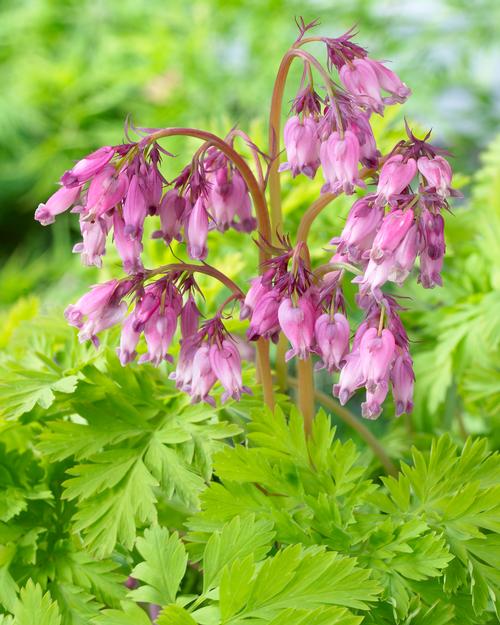Your Guide to Planning, Planting, and Growing Dicentra
Dicentra is an elegant, easy care perennial for shady gardens. More commonly known as bleeding heart, it is named for its heart-shaped blossoms that dangle from slender, arching stems. Delicate, fernlike foliage creates a perfect backdrop for the flowers.
Dicentra is a great companion for other shade loving perennials such as hosta, astilbe and ferns, as well as summer-blooming bulbs such as caladiums and begonias. Generations of gardeners have lost their hearts to dicentra’s charm.
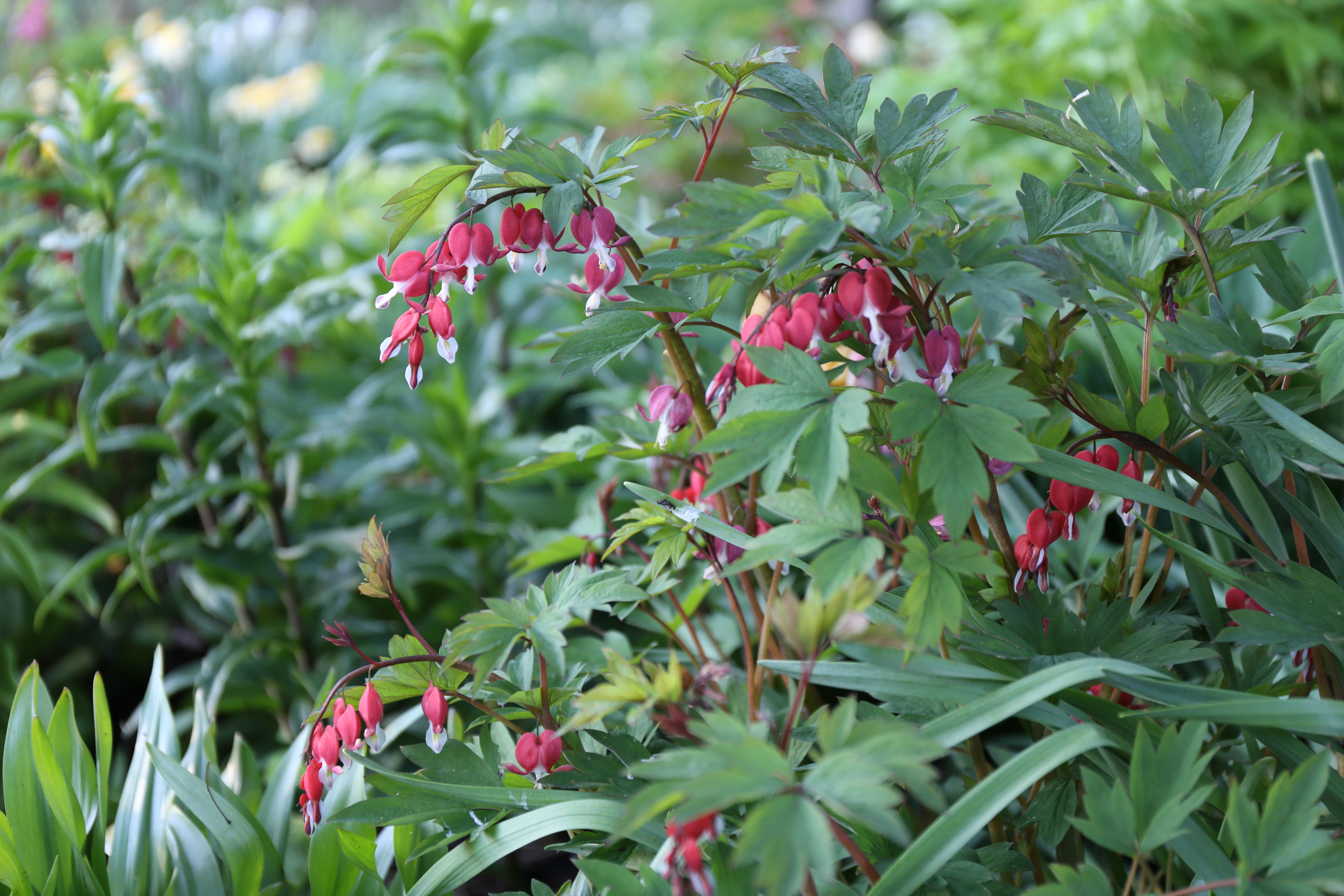
Start with a Better Plant
When you compare two dicentra plants side by side, it’s easy to see differences in quality. Longfield Gardens supplies grade #1 plants that have strong, well developed root systems (as shown at left). The bigger the root system, the faster the plant will settle into your garden and the sooner it will flower.
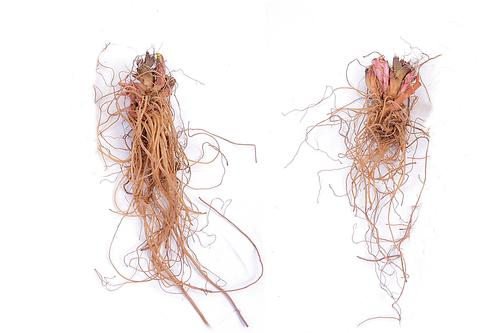
Plan for Success
Shade and Sun: Old fashioned bleeding heart (Dicentra spectablis), fern-leaf bleeding heart (Dicentra formosa) and fringed bleeding heart (Dicentra eximia) all grow best in partial shade, where the foliage is protected from hot sun.
Zone: Dicentra are hardy in zones 3-9. If you don't know your growing zone, check the map HERE.
When to plant: Plant bareroot dicentra in early spring while the plants are still dormant. Potted plants may be planted at any time during the growing season.
Planting Tips
Dicentra grows best in soil that stays lightly moist and is rich in organic matter. Before planting, you can improve the soil by adding compost or leaf mold. There’s no need to add fertilizer. Dicentra are actually quite sensitive to fertilizers so it’s best to let the plants draw nutrients directly from the soil. Do not plant dicentra in soggy soil or in soil that is extremely dry.
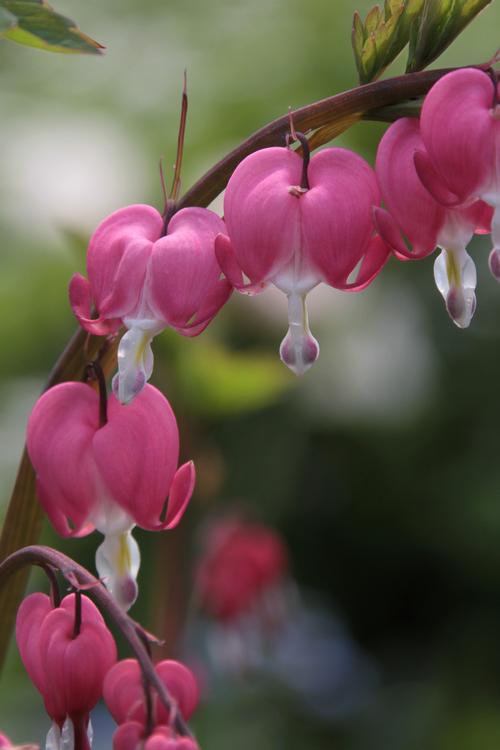
How to Plant Dicentra
Loosen the soil to a depth of 8-12” and mix in several handfuls of compost.
Dig a hole that’s large enough to contain all the roots. Position the plant in the hole so the crown of the plant (where the roots meet the stem) is positioned about 1” below the surrounding soil.
Cover the roots with soil and water well.

Where to Plant Dicentra
Woodland Gardens: Bleeding heart is a great companion for primroses, phlox, columbine, violets, trillium and other spring ephemerals. Its informal habit and fernlike foliage blends well with wildflowers and other native plants.
Shady Perennial Gardens: All types of dicentra are ideal for shady perennial gardens, where they combine beautifully with hosta, astilbe, pulmonaria, ferns and lady’s mantle.
Ground Cover: For a pretty ground cover beneath lilacs and other flowering shrubs, combine bleeding heart with small spring-blooming bulbs such as crocus, chionodoxa and scilla. As the early-blooming bulbs fade, the fernlike leaves of the bleeding heart will hide their foliage.
Rock Gardens: In the wild, Dicentra formosa often grows on rocky outcroppings. It will be equally at home in a semi-shaded rock garden.
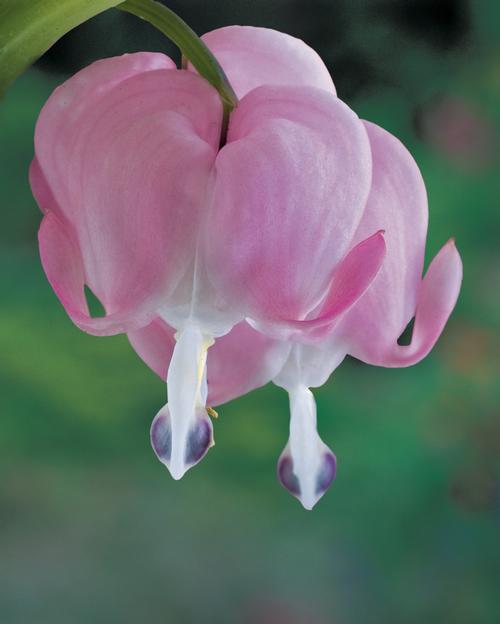
What to Expect
Old fashioned bleeding heart (Dicentra spectabilis) blooms in spring, at the same time as daffodils and tulips. After flowering, the foliage will gradually yellow and die back to the ground. If you wish, you can cut off the foliage once it becomes limp and yellows. The plant may send up a fresh batch of leaves or it may just go dormant until the next spring. Plan ahead so nearby plants such as ferns, astilbes or hostas can fill in the gap.
Fern-leaf bleeding heart (Dicentra formosa) is native to the eastern US, where it grows naturally in woodlands and on rocky cliffs. This low-growing plant produces a mound of lacy foliage that looks good all season long. Bloom time is early summer. Fringed bleeding heart (Dicentra eximia) blooms in early summer and may continue to flower on and off for months. Once fern-leaf and fringed dicentras become well established, the plants are more sun and drought tolerant than old fashioned bleeding heart.
If deer are a problem in your garden, you will probably find they ignore all dicentras. Hummingbirds, on the other hand, love the nectar-rich flowers.

How to Care for Dicentra
After planting, mulch the area around your dicentra with shredded leaves or compost. These organic mulches will suppress weeds, retain moisture and gradually enrich the soil as they break down. Old fashioned bleeding heart grows into a large plant that may eventually occupy a 3' x 3' area. Other dicentras are much smaller and the plants can be spaced 12 to 15 inches apart.
Dicentra are hardy perennials and will flower for many years without dividing. If it’s necessary to move a plant, do so in early spring while the plant is still dormant. The roots of dicentra are brittle and the plants don’t like being moved. Take the time to dig a large hole and remove the entire root ball. Replant immediately and water consistently until the plant has reestablished its root system.
Shop for dicentra HERE.
To learn more about dicentra and other shade loving perennials:
Choosing Plants for Sun or Shade
